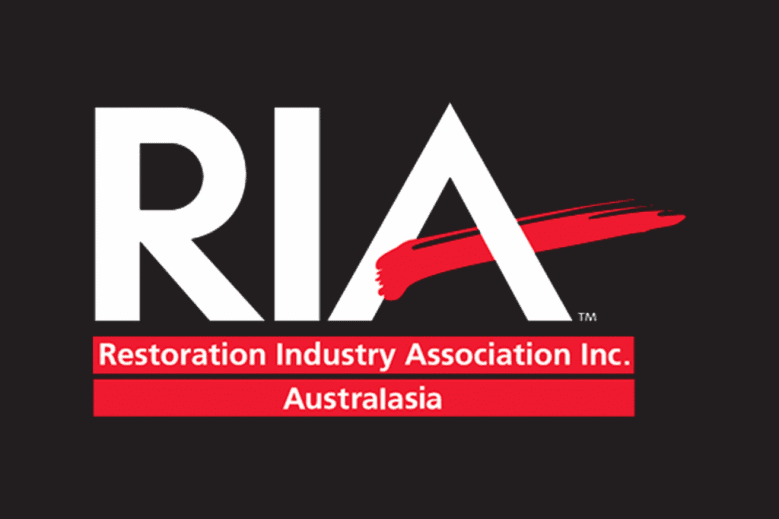Australia’s restoration industry has taken a major step forward with the release of the AS-IICRC S500:2025 Standard for Professional Water Damage Restoration, developed in partnership with Standards Australia, the Institute of Inspection, Cleaning and Restoration Certification (IICRC), and RIA Australasia.
This milestone brings national consistency to how water damage restoration is performed, scoped, and verified — with direct implications for restoration professionals, insurers, property managers, and homeowners alike.
About RIA Australasia
The Restoration Industry Association Australasia (RIA Australasia) is the regional chapter of the global Restoration Industry Association (RIA) — the oldest and largest non-profit trade body in the sector. Since 2016, RIA Australasia has supported restoration professionals across Australia and New Zealand by promoting education, ethical standards, and industry alignment with globally recognised frameworks.
Understanding the AS-IICRC S500:2025 Standard
Published by Standards Australia in early 2025, the AS-IICRC S500:2025 is Australia’s adaptation of the ANSI/IICRC S500:2021 standard. It establishes a formal process for assessing, mitigating, and restoring water-damaged structures across residential, commercial, and institutional settings.
It includes procedures for:
- Categorising water intrusion (Category 1–3)
- Identifying microbial and health risks
- Psychrometry and drying science
- Structural material response and dehumidification
- Use of environmental controls and containment
- Documentation, monitoring, and validation
This standard replaces ad hoc practices with a shared framework recognised by both insurers and contractors.
Why This Matters
Before 2025, Australia lacked a nationally recognised water damage restoration standard. Practices varied widely between contractors, insurers, and hygienists — often leading to scope disputes, health risks, or incomplete drying.
The AS-IICRC S500:2025 introduces a unified, evidence-based protocol for restoration and claim validation
It aligns with international best practices while adapting to Australian regulations
It sets drying targets, microbial handling procedures, and moisture verification guidelines for consistent service delivery
Timeline of Key Events
- 2021 – ANSI/IICRC S500:2021 released internationally
- 2023 – Standards Australia and RIA begin consultation
- Feb 2025 – AS-IICRC S500:2025 published as an Australian Standard
- Mar–Apr 2025 – Suncorp and other insurers begin referencing the standard
- 2025 onward – Training and adoption promoted by RIA Australasia and IICRC
Insurance Industry Support
The standard has gained early support from the insurance sector. In Insurance News, Suncorp Group stated that it welcomes the standard’s ability to bring clarity and consistency to water damage claims.
“It will bring consistency to property claims,” said Greg Buchhorn, Executive Manager Claims Procurement at Suncorp.
The standard helps define expectations for Category 3 events (sewage or contaminated water), microbial hazards, and drying validation — areas where insurers and restorers previously relied on internal documentation or conflicting practices.
IICRC Endorsement and International Significance
The IICRC, as the originator of the S500 standard, has formally endorsed the Australian adaptation. In a March 2025 press release, the organisation described the standard’s publication as a “milestone for the Australian restoration industry.”
“The publication of the AS IICRC S500 marks a major milestone… the result of years of collaboration and a shared vision.”
— Mehmet Ucar, IICRC Consensus Body Representative
“This demonstrates the role and development of standards in the global water damage restoration industry.”
— Brandon Burton, IICRC Standards Chairman
The adoption of the S500 in Australia reflects a growing global consensus on minimum acceptable drying, safety, and documentation standards in the built environment.
RIA Code of Practice
Complementing the S500, RIA Australasia enforces a Code of Practice that covers:
- Ethical insurance engagement
- Evidence-based documentation
- Occupational health and safety
- Professional development and certification
- Client privacy and data security
Together, the Code and the S500 help lift industry accountability and reduce inconsistency between contractors.
Conclusion
The AS-IICRC S500:2025 sets a new benchmark for water damage restoration in Australia. Backed by insurers, restoration leaders, and standards bodies, it establishes a consistent and safe pathway for responding to water-related disasters — protecting both people and properties.
Its release marks a turning point in industry professionalism and brings Australia into alignment with international best practice.
